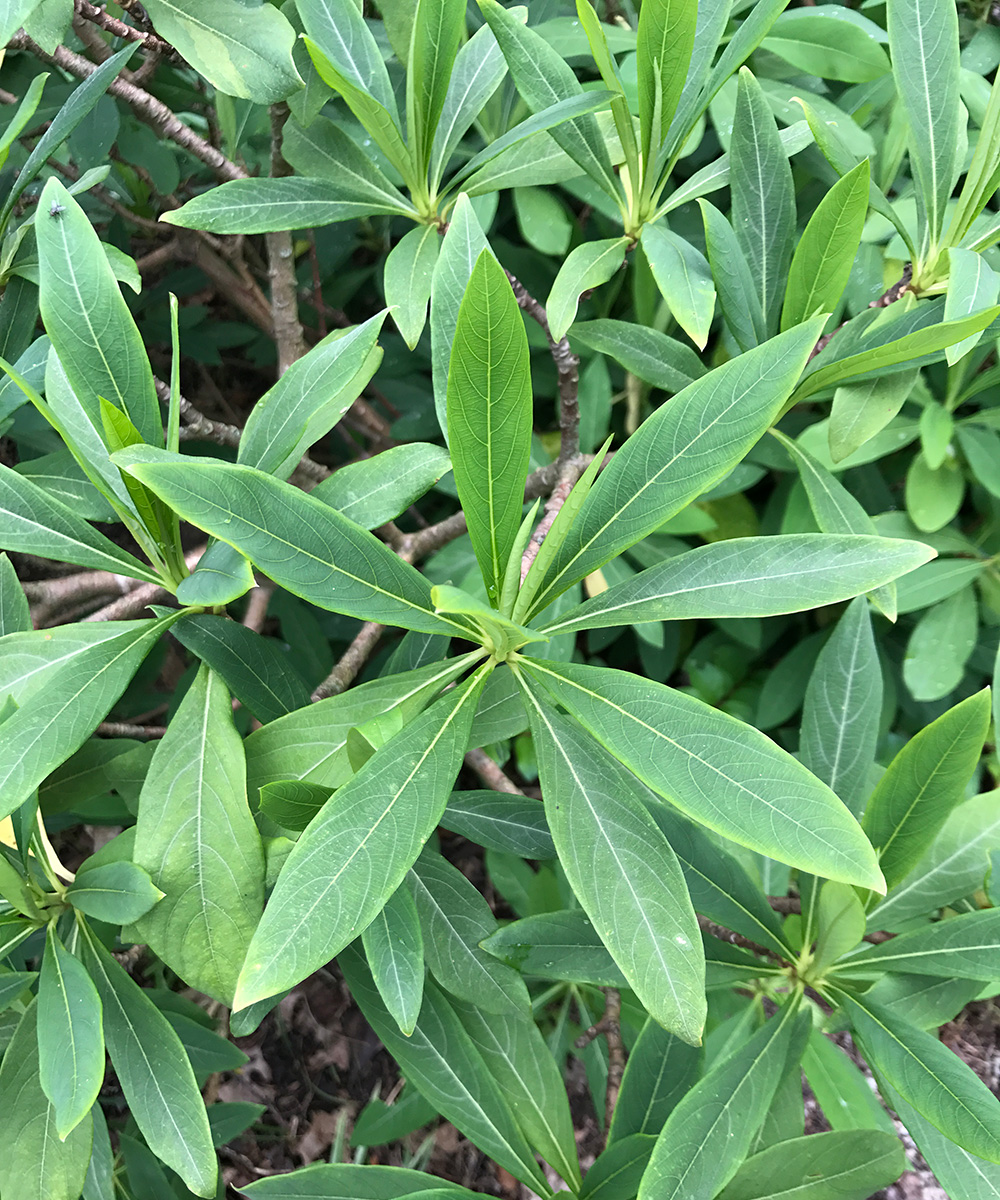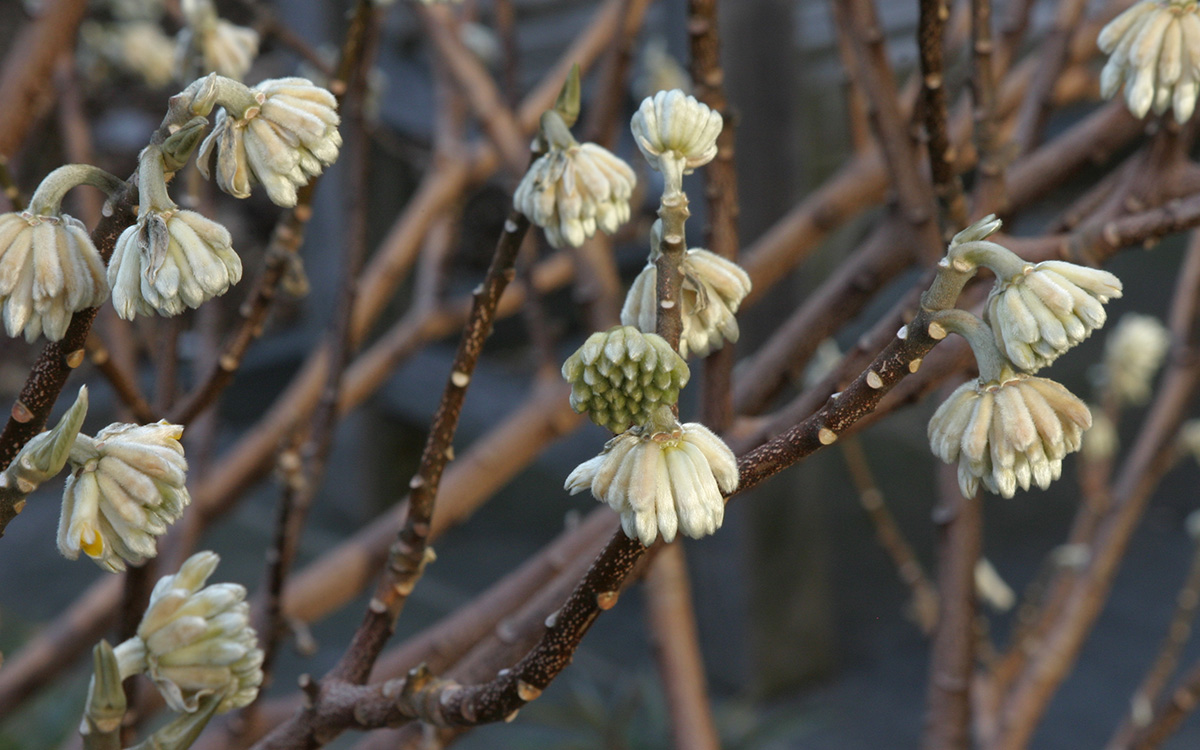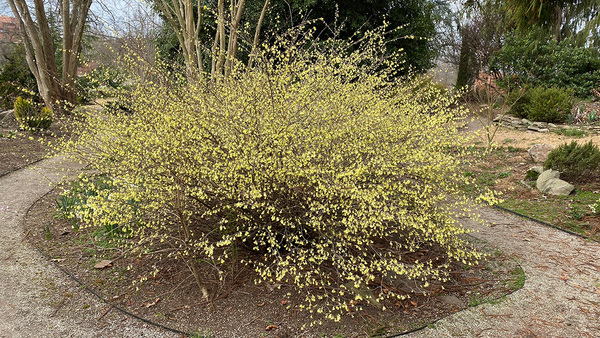
Edgeworthia (Edgeworthia chrysantha, Zones 7–10) is truly a four-season plant. In summer, it’s covered in beautiful, elongated, 5-inch-long leaves that hold droplets of water on their finely pubescent surfaces. In fall, leaves drop to reveal a beautifully structured plant with sweet-smelling winter flowers. I am compelled to say the flowers that bloom from midwinter to midspring are the true show-stopper and how most gardeners are introduced to this plant. Their fragrance is captivating and is often noticed before they are seen. Edgeworthia is hardy for almost our entire region when it’s sited properly. Even in a protected Zone 6, it is possible to grow it. Spring planting seems to be the trick to getting it off to the right start.

Proper conditions and mature size
In its native China, you’ll find edgeworthia growing in stream banks and at the edge of woodlands. In the Southeast, partial shade or even full shade are appropriate. It finds a happy home in areas with rich, organic soils that don’t completely dry out. Edgeworthia quickly forms a multistemmed woody shrub that’s up to 6 feet tall and wide when given the right growing conditions. I have seen specimens larger than 6 feet tall in warmer areas of the region, but it’s uncommon. Training a plant to a single stem can also be a nice effect. Those familiar with the closely related plant daphne (Daphne spp. and cvs., Zones 4–9) might recognize some similar characteristics.

Interesting history
When I was first introduced to this plant, I assumed that its common name, paper bush, was in reference to its paper-thin leaves. However, the name refers to paper products made from the woody bark and stems of the plant. Both edgeworthia and daphne have traditionally been used to create fine paper when strength was also required. For those interested in botanical nomenclature and taxonomy, you will run into confusion with this plant. You will most often find the name Edgewothia chrysantha in the trade. But you may also run into E. papyrifera, which is sometimes used as a synonym for E. chrysantha or to refer to a plant with overall smaller characteristics.

I add edgeworthia to almost any garden I’m involved with that has an ounce of shade. There is something about this plant that makes me feel like I’ve gotten away with something when I see it bloom in my garden. If you have the conditions to support it, there is no reason edgeworthia should not be added to your garden this year.
—Andy Pulte is a faculty member in the plant sciences department at the University of Tennessee.


















Comments
Log in or create an account to post a comment.
Sign up Log in